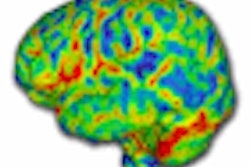
NEW YORK (Reuters Health)m, Aug 11 - Women treated with radiation therapy for Hodgkin's lymphoma before age 41 are at high risk for breast cancer, but a reduction in radiation volume can lower this risk, according to a study published online Monday in the Journal of Clinical Oncology.
"Our results support the hypothesis that reducing the proportion of breast tissue exposed to radiation will indeed decrease the future risk of breast cancer, the most important late treatment effect among female survivors of Hodgkin's lymphoma," Dr. Maria L. De Bruin from the Netherlands Cancer Institute, Amsterdam, and colleagues note in their report.
The investigators assessed the long-term risk of breast cancer in 1,122 women with Hodgkin's lymphoma who survived five years after initial Hodgkin's therapy.
All of the women were treated for Hodgkin's before the age of 51, during the period 1965 to 1995, a time when radiation doses administered were relatively stable, typically 36 to 40 Gy in fractions of 2.0 Gy, the study team notes.
After a median follow-up of 17.8 years, 120 women developed breast cancer, yielding a standardized incidence ratio (SIR) of 5.6, compared with the general population.
The relative risk of breast cancer remained high more than 30 years after treatment (SIR, 9.5), Dr. De Bruin and colleagues report.
Mirroring other studies, the overall cumulative incidence of breast cancer 30 years after Hodgkin's therapy was 19%; it was 26% for women treated before age 41.
There was also evidence that women with a longer period of intact ovarian function (i.e., 20 years or more) after radiotherapy had a much higher risk of breast cancer compared to women entering premature menopause relatively shortly after treatment (i.e., fewer than 10 years of intact ovarian function).
"This finding," note the authors of a related commentary, "provides insight into one potential mechanism underlying the observation that younger age at treatment is associated with increased risks of subsequent breast cancer."
"Adolescent females have a longer fertile life span after exposure to radiation therapy than older patients, and consequently a greater exposure to the breast cancer-promoting effects of estrogen," Drs. Michael Crump and David Hodgson from Princess Margaret Hospital, University of Toronto, Canada, explain.
Dr. De Bruin's team also found that mantle field irradiation, involving the axillary, mediastinal and neck nodes, was associated with a 2.7-fold increased risk of breast cancer development, compared with mediastinal irradiation alone, the investigators report.
"Remarkably," note Drs. Crump and Hodgson, limited-field radiotherapy "translated into an almost 20% absolute reduction in the 30-year cumulative incidence of breast cancer, which was less than 10% among those receiving mediastinal radiation therapy without pelvic radiation therapy."
"However, long-term risks among patients receiving limited-field radiation therapy were based on very few patients, and longer follow-up will be required to reliably confirm these findings," the authors conclude.
J Clin Oncol 2009;27.
Last Updated: 2009-08-10 16:00:51 -0400 (Reuters Health)
Related Reading
Risk of breast cancer after radiotherapy in childhood quantified, July 21, 2009
Hodgkin's survivors face high stroke risk, June 24, 2009
Copyright © 2009 Reuters Limited. All rights reserved. Republication or redistribution of Reuters content, including by framing or similar means, is expressly prohibited without the prior written consent of Reuters. Reuters shall not be liable for any errors or delays in the content, or for any actions taken in reliance thereon. Reuters and the Reuters sphere logo are registered trademarks and trademarks of the Reuters group of companies around the world.


















